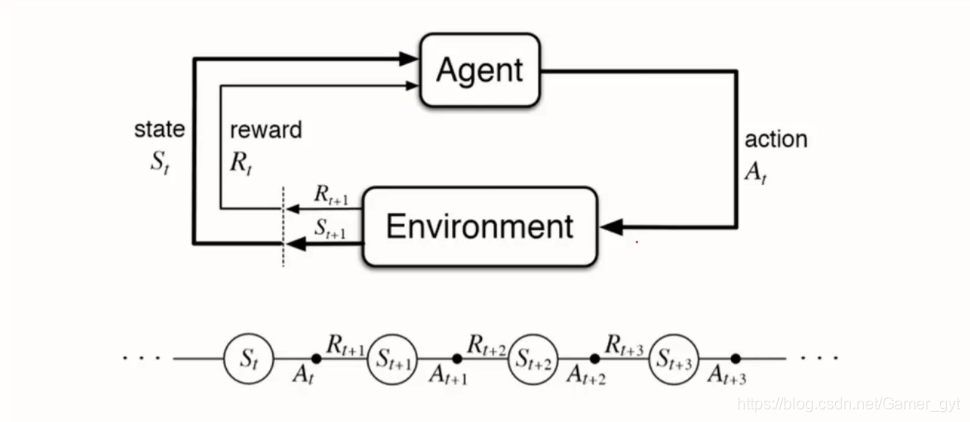NAS强化学习新应用:利用RL优化神经架构
发布时间: 2024-08-22 02:24:00 阅读量: 38 订阅数: 43 


# 1. NAS(神经架构搜索)概述**
神经架构搜索(NAS)是一种自动机器学习技术,用于设计神经网络架构。与传统的人工设计方法不同,NAS使用算法自动搜索最优的网络架构,以提高模型性能。NAS的目的是找到在特定任务上具有最佳准确性和效率的网络架构。
NAS通常采用强化学习或进化算法等优化技术。强化学习算法使用奖励函数来指导搜索过程,而进化算法使用选择、交叉和变异等遗传操作。通过迭代搜索,NAS算法可以生成和评估大量候选架构,并选择最优的架构。
# 2. 强化学习在NAS中的应用
### 2.1 强化学习的基础知识
强化学习是一种机器学习范式,它允许代理在与环境交互的过程中学习最优行为。代理通过执行动作并观察环境的反馈来学习。环境提供奖励或惩罚,指导代理优化其行为。
强化学习的关键概念包括:
- **状态(State):**代理对环境的当前理解。
- **动作(Action):**代理可以采取的可能行为。
- **奖励(Reward):**代理对采取特定动作的反馈。
- **价值函数(Value Function):**给定状态下采取特定动作的长期预期奖励。
### 2.2 强化学习在NAS中的优势和挑战
强化学习在NAS中具有以下优势:
- **探索能力:**强化学习算法可以探索大量可能的架构,即使是人类专家也难以手动设计。
- **自动化:**强化学习算法可以自动化架构搜索过程,无需人工干预。
- **可扩展性:**强化学习算法可以扩展到搜索大型和复杂的架构。
然而,强化学习在NAS中也面临一些挑战:
- **计算成本:**强化学习算法通常需要大量的计算资源。
- **可解释性:**强化学习算法的决策过程可能难以理解和解释。
- **收敛性:**强化学习算法可能难以收敛到最优解。
### 代码块:强化学习在NAS中的伪代码
```python
# 定义环境
env = NASEnvironment()
# 定义代理
agent = RL_Agent()
# 训练代理
for episode in range(num_episodes):
state = env.reset()
done = False
while not done:
action = agent.act(state)
next_state, reward, done, _ = env.step(action)
agent.learn(state, action, reward, next_state)
state = next_state
# 评估代理
scores = []
for _ in range(num_evaluations):
state = env.reset()
done = False
score = 0
while not done:
action = agent.act(state)
next_state, reward, done, _ = env.step(action)
score += reward
state = next_state
scores.append(score)
```
**逻辑分析:**
这段伪代码展示了强化学习在NAS中的应用。它定义了一个环境和一个代理,并使用环境反馈训练代理。然后评估代理在环境中的性能。
**参数说明:**
- `num_episodes`:训练的剧集数量。
- `num_evaluations`:评估的次数。
# 3. 基于 RL 的 NAS 算法
### 3.1 进化算法
进化算法是受生物进化过程启发的优化算法。它们通过选择、交叉和突变等操作来生成新的候选解决方案。在 NAS 中,进化算法用于搜索神经网络架构。
#### 3.1.1 遗传算法
遗传算法 (GA) 是一种进化算法,它通过模拟自然选择过程来工作。GA 使用以下步骤:
1. **初始化:**随机生成一组候选解决方案(个体)。
2. **评估:**计算每个个体的适应度(目标函数值)。
3. **选择:**根据适应度选择最好的个体。
4. **交叉:**将两个选定的个体结合起来,产生新的个体。
5. **突变:**随机更改新个体中的一些基因。
6. **重复:**重复步骤 2-5,直到达到终止条件。
#### 3.1.2 粒子群优化
粒子群优化 (PSO) 是一种进化算法,它通过模拟鸟群或鱼群的行为来工作。PSO 使用以下步骤:
1. **初始化:**随机生成一组候选解决方案(粒子)。
2. **评估:**计算每个粒子的适应度(目标函数值)。
3. **更新速度:**根据当前位置、最佳位置和群最佳位置更新每个粒子的速度。
4. **更新位置:**根据速度更新每个粒子的位置。
5. **重复:**重复步骤 2-4,直到达到终止条件。
### 3.2 梯度下降算法
梯度下降算法是通过迭代地沿着目标函数的梯度移动来找到最优解的优化算法。在 NAS 中,梯度下降算法用于搜索神经网络架构。
#### 3.2.1 贝叶斯优化
贝叶斯优化是一种梯度下降算法,它使用贝叶斯定理来指导搜索过程。贝叶斯优化使用以下步骤:
1. **初始化:**使用随机采样初始化一个高斯过程模型。
2. **评估:**在选定的点处评估目标函数。
3. **更新模型:**使用评估结果更新高斯过程模型。
4. **选择下一个点:**根据高斯过程模型选择下一个要评估的点。
5. **重复:**重复步骤 2-4,直到达到终止条件。
#### 3.2.2 强化学习
强化学习是一种梯度
0
0





